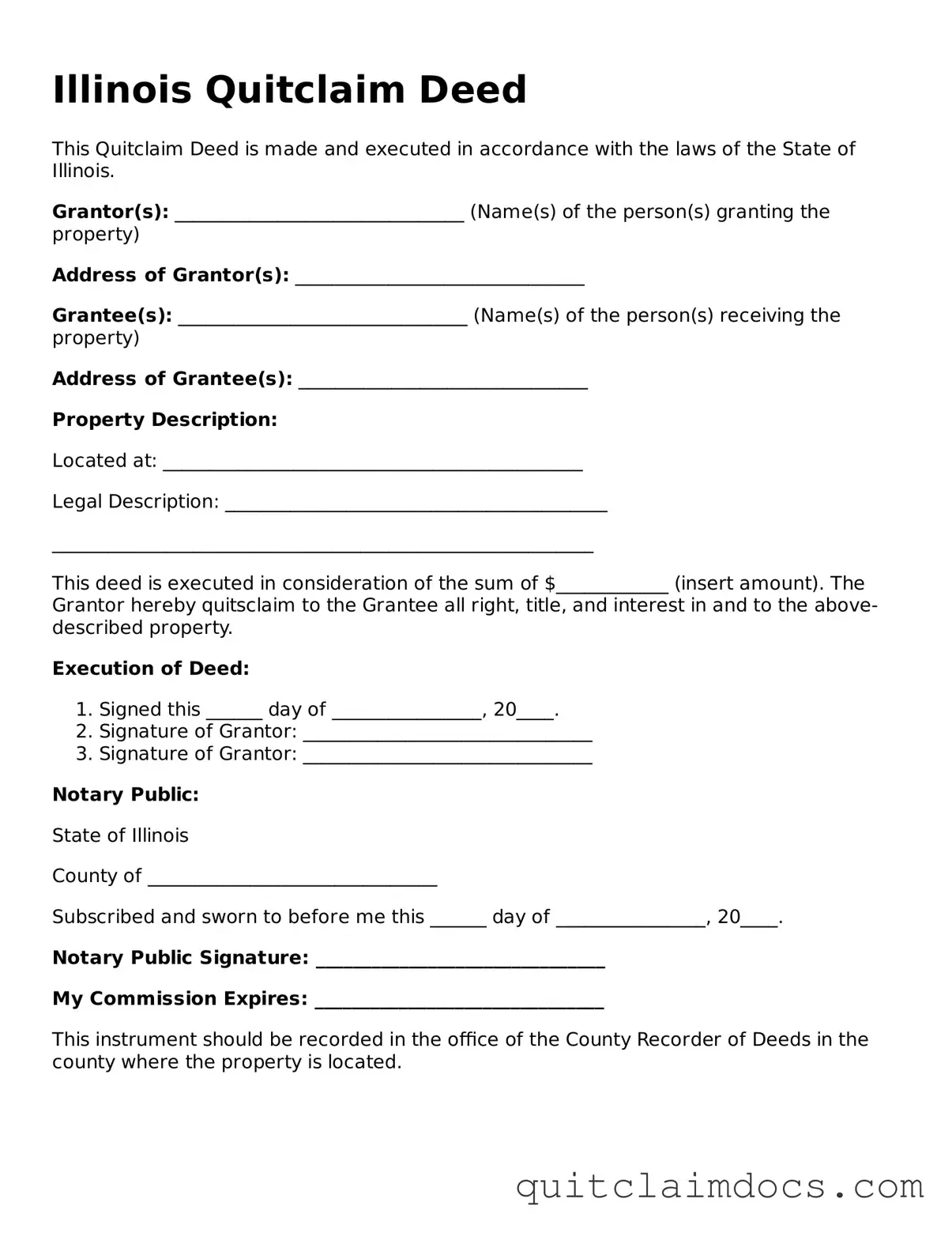Illinois Quitclaim Deed
This Quitclaim Deed is made and executed in accordance with the laws of the State of Illinois.
Grantor(s): _______________________________ (Name(s) of the person(s) granting the property)
Address of Grantor(s): _______________________________
Grantee(s): _______________________________ (Name(s) of the person(s) receiving the property)
Address of Grantee(s): _______________________________
Property Description:
Located at: _____________________________________________
Legal Description: _________________________________________
__________________________________________________________
This deed is executed in consideration of the sum of $____________ (insert amount). The Grantor hereby quitsclaim to the Grantee all right, title, and interest in and to the above-described property.
Execution of Deed:
- Signed this ______ day of ________________, 20____.
- Signature of Grantor: _______________________________
- Signature of Grantor: _______________________________
Notary Public:
State of Illinois
County of _______________________________
Subscribed and sworn to before me this ______ day of ________________, 20____.
Notary Public Signature: _______________________________
My Commission Expires: _______________________________
This instrument should be recorded in the office of the County Recorder of Deeds in the county where the property is located.
